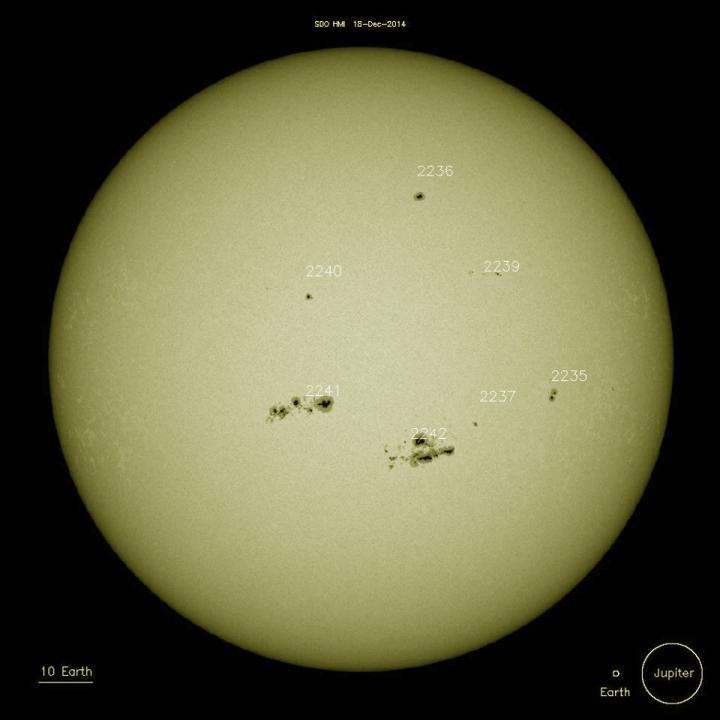The sun emitted a mid-level flare on Dec. 18, 2014, at 4:58 p.m. EST. NASA's Solar Dynamics Observatory, which watches the sun constantly, captured an image of the event. Solar flares are powerful bursts of radiation. Harmful radiation from a flare cannot pass through Earth's atmosphere to physically affect humans on the ground, however -- when intense enough -- they can disturb the atmosphere in the layer where GPS and communications signals travel.
To see how this event may affect Earth, please visit NOAA's Space Weather Prediction Center at http://spaceweather.gov, the U.S. government's official source for space weather forecasts, alerts, watches and warnings.

Sunspots on the sun are areas of complex and intense magnetic fields, which can produce eruptions on the sun such as solar flares. Each is labeled by NOAA with a number. Active region 2241 erupted with a mid-level flare on Dec. 18, 2014.
(Photo Credit: NASA/SDO/HMI/TheSunToday)
This flare is classified as an M6.9-class flare. M-class flares are a tenth the size of the most intense flares, the X-class flares. The number provides more information about its strength. An M2 is twice as intense as an M1, an M3 is three times as intense, etc.
Updates will be provided as needed.

A mid-level solar flare erupted on the sun on Dec. 18, 2014. It can be seen in this image from NASA's Solar Dynamics Observatory as the bright spot near the center of the sun. SDO observes light in extreme ultraviolet wavelengths that can highlight the intense heat present in a solar flare.
(Photo Credit: NASA/SDO)
Source: NASA/Goddard Space Flight Center